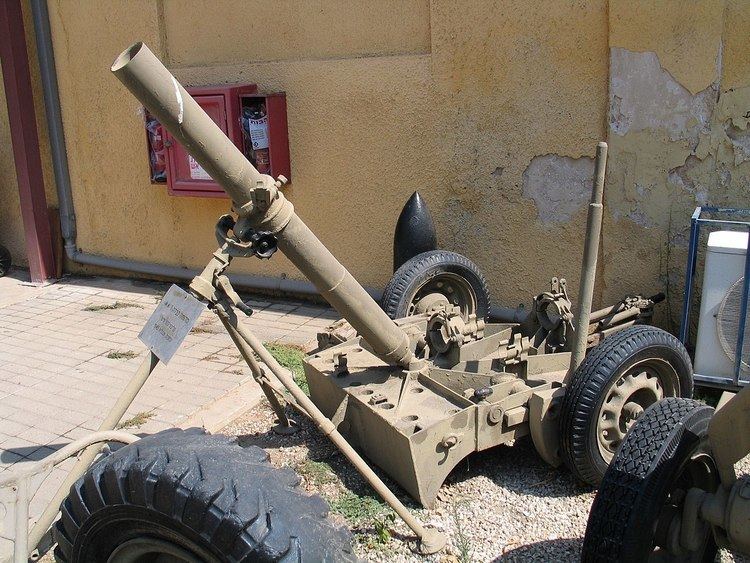Type Mortar In service 1942- | Place of origin United Kingdom No. built about 3,800 | |
 | ||
Used by United Kingdom
Australia Wars Second World War
Korean War
Indonesia–Malaysia confrontation | ||
The Ordnance ML 4.2 inch Mortar was a heavy mortar used by the British Army during World War II, and by other armies postwar.
Contents
History
The 4.2 inch mortar was a Smooth Bore (SB) weapon of the Stokes pattern and was designed by the Armaments Research and Development Establishment and produced by the Royal Ordnance Factories. It entered British service in 1942, where it was used to equip Royal Engineer chemical warfare companies. The Mark 3 became the standard model. The first combat use was at El Alamein, which expended all the HE ammunition in the theatre.
Around mid-1943, the Royal Engineer chemical warfare companies were disbanded and one heavy mortar company of each infantry division machine-gun battalion was equipped with the mortar. This company was organized with sixteen 4.2-inch Mortars, in four platoons of four mortars each. In early 1944, divisions in Italy also held a pool of mortars for issue to other units as required, usually troops in the divisional anti-tank regiment, some regiments even converted one or more batteries to mortars. The mortars were somewhat slower in reaching the far east, although the Australian forces in the South West Pacific had them before troops fighting in Burma did.
Postwar
After World War II, the mortars were handed over to the Royal Artillery, the 170th Mortar Battery used them at the Battle of Imjin River in Korea. They were used during the 1950s, also by airborne artillery, deployed to Kuwait in 1961 and manned by soldiers from air defence batteries during the Confrontation in Borneo in 1965.
Description
The 4.2-inch Mortar entered production at the end of 1941 with a standard baseplate and tripod. The normal detachment was six men and it was transported with ammunition in a 10 cwt trailer, usually towed behind a Loyd Carrier. There was also an auxiliary baseplate that fitted around it, to increase its area for use on softer ground. Later an integrated trailer/baseplate was developed, called the Mk 1 Mobile Baseplate. The wheels, which were on suspension arms, were unlocked and raised for firing; the Mk1/1 had detachable wheels and the barrel with tripod attached, was stowed on top for towing. The mobile baseplate trailer mounting could be brought into action by 2 men. Regarding rate of fire, one source reports a crew putting 23 bombs in the air before the first impacted.
Ammunition
Both HE (9.1 kg) and smoke (10.2 kg) ammunition was used. Smoke include WP and Base Ejection, and in World War II other types for practice.
Two charges were available. In World War II, both streamlined and cylindrical bombs were available.
